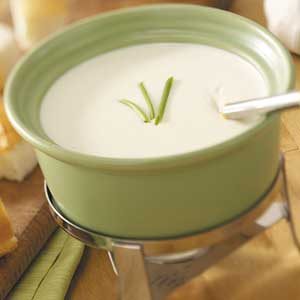Parmesan Fondue: Recipes, Tips, and Health Benefits
Parmesan fondue has roots tracing back to the Swiss tradition of melted cheese dishes. While Swiss fondue typically uses Gruyère or Emmental, Parmesan offers a distinct nutty flavor. This variation came into prominence as people sought to put an Italian twist on a beloved Swiss classic. The use of Parmesan in fondue showcases the cheese’s versatility beyond conventional grating or shaving, emphasizing its role in creating a rich, creamy dip that appeals to gourmet palates.
Regional Variations
Different regions have adapted Parmesan fondue to match local tastes. In Northern Italy, chefs often mix Parmesan with white truffle oil, providing a luxurious twist. In Southern Italy, it’s common to add sun-dried tomatoes or basil, infusing the fondue with Mediterranean flavors. Beyond Italy, global adaptations include the use of different herbs and spices, reflecting cultural culinary practices. Each variation retains the core essence of Parmesan while introducing unique taste elements that offer fresh experiences for fondue enthusiasts.
Key Ingredients of Parmesan Fondue
Parmesan Cheese Choices
Selecting the right Parmesan cheese is crucial for the fondue’s texture and taste. Authentic Parmigiano-Reggiano, aged 18-24 months, provides a balanced nutty flavor and perfect meltability. Cheese graded as Grana Padano can offer a milder alternative, while still providing the essential rich attributes.
Additional Flavor Enhancers
Flavor enhancers elevate the fondue’s complexity. White truffle oil adds an earthy depth, often preferred in Northern Italy. Sun-dried tomatoes, popular in Southern Italy, provide a tangy sweetness. Freshly cracked black pepper and a hint of garlic can further enhance the overall taste, creating a sophisticated blend of flavors.
Step-by-Step Guide to Making Parmesan Fondue
Preparing the Ingredients
Gather specific ingredients to create an authentic Parmesan fondue. Use high-quality Parmesan cheese, such as Parmigiano-Reggiano or Grana Padano, for optimal flavor and texture. Grate at least 1.5 cups of cheese to ensure it melts evenly. Choose white wine like Sauvignon Blanc for a subtle acidity, and measure out 1 cup. Prepare 1 clove of garlic by halving it lengthwise and 1 tablespoon of cornstarch for thickening. Have 1 teaspoon of freshly ground black pepper and a pinch of nutmeg ready for seasoning.
Cooking Techniques
Rub the inside of your fondue pot (or heavy-bottomed saucepan) with the halved garlic clove, to impart a mild garlic flavor. In the pot, warm the white wine over medium heat until it starts to simmer, without bringing it to a boil. Gradually add the grated Parmesan cheese, stirring constantly to ensure a smooth mixture. Mix 1 tablespoon of cornstarch with a small amount of cold water, then add it to the cheese mixture for thickening. Continue to stir until the fondue reaches a creamy consistency. Season with black pepper and nutmeg, adjusting to taste. Serve the fondue immediately in a pre-warmed fondue pot to maintain the perfect temperature and consistency.
These cooking techniques ensure the fondue’s rich, creamy texture and balanced flavor.
Serving and Pairing Suggestions
Suitable Accompaniments
Enhance your Parmesan fondue experience with a variety of suitable accompaniments. Serve crusty bread cubes (baguette, ciabatta) to complement the cheese’s creamy texture. Fresh vegetables (carrots, celery, bell peppers) add crunch and color. Include cured meats (prosciutto, salami) for a savory contrast. Offer fruits (grapes, apple slices) to provide sweetness and balance the fondue’s rich flavors. Include pickles (cornichons, pickled onions) to introduce acidity and counter the creaminess.
Wine Pairings
Pair Parmesan fondue with wines that enhance its nutty and creamy profile. Opt for white wines (Chardonnay, Sauvignon Blanc) which provide acidity that cuts through the richness. Choose sparkling wines (Prosecco) for a lively contrast. Consider red wines (Pinot Noir) if you prefer deeper, more complex flavors. Avoid overly tannic wines (Cabernet Sauvignon) to prevent overpowering the fondue’s delicate taste. Select wines with subtle and balanced flavors to complement the fondue without overwhelming it.
Health Considerations of Parmesan Fondue
Nutritional Benefits
Parmesan fondue, rich in protein and calcium, can contribute to bone health and muscle function. Parmesan cheese, specifically Parmigiano-Reggiano, provides around 35g of protein and 1,200mg of calcium per 100g serving. These nutrients are essential for maintaining strong bones and supporting your body’s daily functions. Additionally, Parmesan is lactose-free, making it suitable for those with lactose intolerance.
Dietary Considerations
While Parmesan fondue offers nutritional benefits, it’s high in saturated fat and sodium. A 100g serving of Parmesan contains approximately 19g of fat and 1,500mg of sodium. Excessive intake of these can impact cardiovascular health and blood pressure. If you’re watching your dietary intake, consider moderating portion sizes or pairing the fondue with vegetables like broccoli, carrots, and bell peppers to balance your meal. Also, opting for lower-fat options or reducing added salt can help manage these dietary concerns.
Conclusion
Parmesan fondue offers a delightful blend of nutty flavors and creamy textures, making it a versatile and indulgent dish. Whether you’re adding white truffle oil or sun-dried tomatoes, using high-quality Parmesan cheese ensures an exceptional taste experience. While it’s a rich source of protein and calcium, moderation is key due to its saturated fat and sodium content. Pairing it with vegetables or opting for lower-fat versions can help you enjoy this savory treat without compromising your health goals. Dive into the world of Parmesan fondue and elevate your culinary repertoire with this delectable dish.






